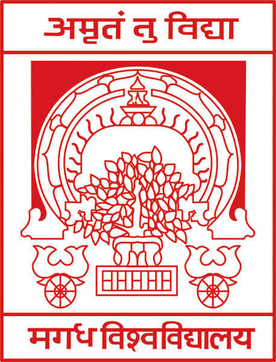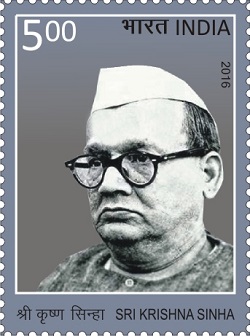This article needs additional citations for verification .(May 2014) |
Poiwan is a village in the Aurangabad district of Bihar in India. The population is around 2,600, [1] of which around 8% are Muslims.[ citation needed ]
This article needs additional citations for verification .(May 2014) |
Poiwan is a village in the Aurangabad district of Bihar in India. The population is around 2,600, [1] of which around 8% are Muslims.[ citation needed ]
Poiwan is a very old village. According to a written record which is kept in this village only, it existed in the 17th century. It is said that first a Muslim zamindaar (minor king) ruled this village. After that, four Kshatriya (warrior clan) brothers came from the Mainpur district of Rajasthan to claim this village with the help of another local Hindu zamindar. Two of them died in that battle which they won finally. After that, this village remains a Hindu-dominated village.
There is an old small fort in the village commonly said by local people as gaadh, as well as a temple and a large water reservoir, the latter being used for fishing and as a water supply in the summer. Poiwan has a government high school. There is one lord Radha Krishna temple built by Er Ajit Pratap Narayan Singh and her wife Sunita singh inaugurated by then governor of Nagaland Sri Nikhil kumar on 17-1-2011.

Gaya is a city, municipal corporation and the administrative headquarters of Gaya district and Magadh division of the Indian state of Bihar. Gaya is 116 kilometres (72 mi) south of Patna and is the state's second-largest city, with a population of 470,839. The city is surrounded on three sides by small, rocky hills, with the Phalgu River on its eastern side.

Magadh University is a public state university and institution of higher education in Bodhgaya, Bihar, India. It is recognised by the University Grants Commission (UGC).
Aurangabadpronunciation (help·info) is a city in Aurangabad District, Bihar, India. It is the district's centre of governance and has a population of 102,244 as of 2011. The people of this region speak Magahi and Hindi.

Shri Krishna Singh (Sinha) (21 October 1887 – 31 January 1961), also known as Shri Babu, was the first chief minister of the Indian state of Bihar (1946–61). Except for the period of World War II, Sinha was the chief minister of Bihar from the time of the first Congress Ministry in 1937 until his death in 1961. Along with the Desh Ratna Rajendra Prasad and Bihar Vibhuti Anugrah Narayan Sinha (A.N. Sinha), Sinha is regarded among the 'Architects of Modern Bihar'. He also led the Dalit entry into the Baidyanath Dham temple (Vaidyanath Temple, Deoghar), which reflected his commitment towards the upliftment and social empowerment of the Dalits. He was the first chief minister in the country to abolish the zamindari system. He underwent different terms of imprisonment for a total of about eight years in British India. Sinha's mass meetings brought hordes of people to hear him. He was known as Bihar Kesari for his lionlike roars when he rose to address the masses. His close friend and eminent Gandhian Bihar Vibhuti A.N. Sinha in his essay Mere Shri Babu wrote that, "Since 1921, the History of Bihar has been the history of the life of Shri Babu".
Navinagar is a city cum Nagar Panchayat in Aurangabad district in the Indian state of Bihar, and is the location of Nabinagar Super Thermal Power Project.
Nikhil Kumar is a former IPS officer-turned politician hailing from Bihar who was Governor of Nagaland from 2009 to 2013 and Governor of Kerala from 2013 to 2014. One of country's well knownIPS officers of 1963 batch from the AGMUT Cadre Kumar also served as DGP of the National Security Guards, Indo-Tibetan Border Police, Railway Protection Force and Commissioner of Delhi Police. He was elected member of the 14th Lok Sabha of India from 2004 to 2009, representing the Aurangabad constituency in Bihar as a member of the Indian National Congress (INC) political party. He also served as the Chairman of the Parliamentary Committee on Information Technology.
Satyendra Narayan Sinha was an Indian politician and statesman, participant in the Indian independence movement, a leading light of Jaya Prakash Narayan's ‘complete revolution’ movement during the Emergency and a former Chief Minister of Bihar. Affectionately called Chhote Saheb, he was also a seven-time Member of Parliament from the Aurangabad constituency, a three-term Member of the Bihar Legislative Assembly, and a Member of the Bihar Legislative Council once. Regarded to be one of India's most influential regional people of the time, his reputation was synonymous with being a strict disciplinarian and tough taskmaster.

Anugrah Narayan Sinha, known as Bihar Vibhuti, was an Indian nationalist statesman, participant in Champaran Satyagraha, Gandhian & one of the architects of modern Bihar, who was the first Deputy Chief Minister and the Finance Minister of the Indian state of Bihar (1946–1957). He was also a Member of the Constituent Assembly of India, which was elected to write the Constitution of India and served in its first Parliament as an independent nation. He also held a range of portfolios including Labour, Local Self Government, Public Works, Supply & Price Control, Health and Agriculture. A.N. Sinha, affectionately called Anugrah Babu, was a very close associate of Mahatma Gandhi during the freedom struggle movement and worked with Bihar Kesari Sri Krishna Sinha to lead the Gandhian movement in Bihar. One of the leading nationalists in the Indian independence movement from Bihar after Dr Rajendra Prasad, he was elected as the Congress Party deputy leader in the state assembly to assume office as first Deputy Chief Minister cum Finance Minister of independent Bihar, and re-elected when the Congress Party won Bihar's first general election with a massive mandate in 1952.

Bhojpur district is one of the thirty-eight districts of the Indian state of Bihar. Arrah town is the administrative headquarters of this district. Bhojpur district came into existence in 1972. Earlier it was the part of Shahabad district. This district is named "Bhojpur" after great Parmara King Bhoja as most early settlers were Rajput rulers of Parmara dynasty then called as Ujjainiya.
Bhumihars, also called Babhan, are a Hindu caste mainly found in Bihar, the Purvanchal region of Uttar Pradesh, Jharkhand, the Bundelkhand region of Madhya Pradesh, and Nepal.

Kishori Sinha was an Indian politician, social activist, a lifelong advocate of women's empowerment and a former two-term Member of Parliament from the Vaishali constituency. She was married to the former Chief Minister of Bihar Satyendra Narayan Sinha, who was a seven-term Member of Parliament, from the constituency of Aurangabad. Her son Nikhil Kumar had served as the Governor of Kerala and Governor of Nagaland.

Anugrah Narayan College, Patna is a co-educational institution of the state of Bihar, India. It is located in Patna, the state capital city, on a 13 acres (53,000 m2) site. A Constituent unit of Patliputra University, the college was established in January, 1956 and its first principal was economist Dr. Gorak Nath Sinha. The college has 22 Undergraduate departments and 23 Postgraduate departments. The college has been selected for Chancellor Award 2021 in Best College and Best Principal of Bihar.
Bihar is a state located in the eastern part of India.
The politics of Bihar, an eastern state of India, is dominated by regional political parties. As of 2021, the main political parties are Rashtriya Janata Dal (RJD), Bharatiya Janata Party (BJP), Janata Dal (United) (JDU), and Indian National Congress (INC). There are also some smaller regional parties, including Samata Party, Hindustani Awam Morcha, Jan Adhikar Party and Vikassheel Insaan Party, Lok Janshakti Party and Rashtriya Lok Janshakti Party, which play a vital role in politics of state. As of 2022, Bihar is currently ruled by Mahagatbandhan (Grandalliance) coalition.
Shyama Singh was an Indian politician and a former Member of Parliament from the Aurangabad (Bihar) and was married to the former Governor of Nagaland and Kerala, Nikhil Kumar, who was also elected to the 14th Lok Sabha from the same constituency in Bihar. She joined Congress at the initiative of Rajiv Gandhi, the late Prime Minister of India, whom she met at a social event in Delhi.As a parliamentarian,her crowning achievement was reviving the Nabinagar Super Thermal Power Project which her father-in-law and veteran Bihar leader Late Satyendra Narayan Singh had conceived in 1989 as the then Chief Minister of Bihar.Shyama Singh was also the vice president of the Bihar Pradesh Congress Committee.

The Bhagalpur violence of 1989 took place between Hindus and Muslims in the Bhagalpur district of Bihar, India. The violence started on 24 October 1989, and the violent incidents continued for 2 months, affecting the Bhagalpur city and 250 villages around it. Over 1,000 people were killed, and another 50,000 were displaced as a result of the violence. It was the worst instance of Hindu-Muslim violence in independent India at the time.
The list of political families of Bihar state of India:
Nabinagar Super Thermal Power Project is a coal-based thermal power plant located at Sivanpur village in Nabinagar taluk in Aurangabad district, Bihar. It was conceptualised in 1989 by the then Chief Minister of Bihar Satyendra Narayan Sinha who sent the proposal to set up a NTPC's super thermal power project at Nabinagar in Bihar's Aurangabad district to then Prime Minister of India Rajiv Gandhi; but the project went into limbo as the following state governments failed to follow it. In 2007, Manmohan Singh's government finally put a stamp of approval on it.